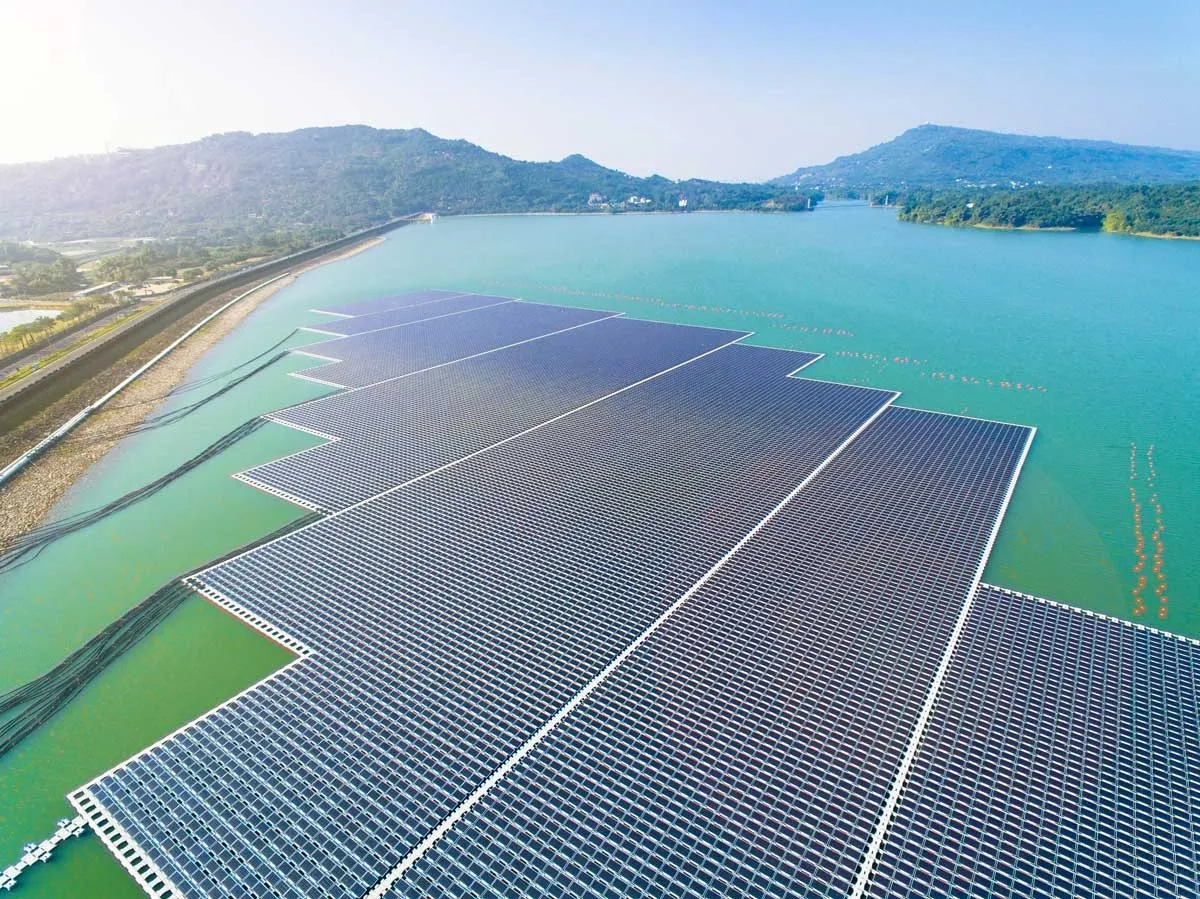Floating Solar Farms
Scientists at the National Renewable Energy Laboratory (NREL) estimate that about 10% percent of American energy requirements could be satisfied using floating solar farms (also referred to as aquavoltaics and floatovoltaics) employed on just one-quarter of the nation’s artificial water reservoirs. This solution saves on land that could be used for other purposes while avoiding […]
Scientists at the National Renewable Energy Laboratory (NREL) estimate that about 10% percent of American energy requirements could be satisfied using floating solar farms (also referred to as aquavoltaics and floatovoltaics) employed on just one-quarter of the nation’s artificial water reservoirs.
This solution saves on land that could be used for other purposes while avoiding some of the environmental consequences of land-based arrays. There are functional benefits to collecting solar energy on water bodies. Notably, installation costs for water-based solar arrays are less, as there is no need to clear and level land and treat the soil. Further, the cooling and cleansing effects of the water can boost solar power production by 10% or more. Solar arrays reduce evaporation rates, and thoughtful design can assist fish growth and other marine life by incorporating solar-powered oxygenators to improve dissolved oxygen levels in the water body and minimize the chance for stagnation and excessive algae growth. Unless you live near a mosquito-infested bayou, chances are that real estate prices have been climbing since the Big Fat Recession of 2008. That’s doubly (or more) true if you live in one of the most expensive cities of the world where residents have to choose between the cost of buying avocado toast for weekly brunch dates and paying rent on an apartment too small for IKEA furniture. In other words, there’s less and less real estate available to build traditional solar farms on terra firma. Floating solar farms are similar to land-based solar power systems except that they are deployed on pontoon-type floats, with an anchoring and mooring system holding the platform in place. In most cases, they are built on man-made reservoirs.
Largest Floating Solar Farm in the World
It shouldn’t be surprising to learn that the first floating photovoltaic system was built in population-dense Japan in 2007, according to a report by the World Bank. The United States was an early adopter, with the first commercial installation atop a reservoir near a California winery in 2008. (Apparently, the vintner believed the land could be better used to grow more grapes for overpriced Merlot.) Of course, it didn’t take long for China to get into the act, finding yet another way to kick America’s ass in tech to become the leader in the floating solar PV industry.
China is now home to the largest floating solar farms in the world, concentrated in Anhui Province atop flooded former coal mines. The biggest floating solar farm can produce 150 megawatts (MW). Estimates vary widely on how many homes one megawatt can power based on a variety of factors such as geography and weather, but the California Energy Commission pegs the number at 750 homes. Our advanced math skills tell us that a 150-megawatt solar power plant can support about 112,500 residences. Of course, China is not California, so either double or half the number, depending on your personal biases.
Scientists have found that floating solar installations also reduce the duration of ‘stratification’ — this is where the sun heats the water, forming distinct layers of water at different temperatures. This tends to happen more in the warmer summer months and can result in the bottom layer of water becoming deoxygenated, which deteriorates water quality — an obvious issue for supplies of drinking water. However, the picture is complex and there are also conditions under which stratification, and therefore detrimental water quality impacts, could increase if floating solar farms are deployed.
The effects on water temperature increased the larger the solar installation, with small arrays of less than ten percent of the lake surface generally having minimal impacts. However, this model concentrated on one lake. Further studies will be needed to determine the optimum size array, and design, and their effects for individual lakes and reservoirs — all of which have unique characteristics. Different designs of solar installations also have different shading and sheltering effects for the sun and wind.
Arrays covering more than 90 percent of a lake could increase the chances of the lake freezing over in winter, the study found — though these effects would also be specific to the body of water and design of the installation and require further studying.
Field studies and further modeling work to build on these initial findings are ongoing.


